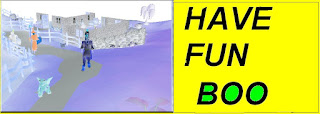

Introduction
Precipitation, evaporation, and condensation are all terms that you recognize, but what do they really mean? They are all part of the water cycle, which is a complex process that not only gives us water to drink, food to eat, but also helps our plants grow. Only about 3% of the Earth’s water is fresh, and 1% of that water can be used for many human purposes. Why can’t we use the other 2% of the fresh water found on the Earth? What about the other 97% of the water found in the world? To find these answers and to discover more, come along for an interactive journey through the water cycle!
Task
You will search for information that will answer the questions about the water cycle. Find a partner and look for the answers together to the questions that follow. You will use the given Internet sites to find the answers to the questions. Make sure you take notes and don’t forget to transfer your work to a Word document. Copy and paste an Internet picture in the final draft. Do not forget to cite your graphic resource.
Advice
The easiest way to answer the questions is to go in order, using the Internet sites in that order, too. Don’t rush through the Web sites, take your time finding the correct answer. The sites have lots of good information and are interesting, stay on task.
Process
Answer the following questions in your social studies notebook:
- What is the definition of evaporation?
- What three processes occurs to form clouds?
- List three forms of precipitation.
- Describe precipitation in your own words.
- Name five ways we can conserve water.
- Is the water you used this morning the same water that dinosaurs used millions of years ago? Explain the reason for your answer.
- What happens to a glass of water if it is left out over a long period of time? (Hint, this is one of the three processes of the water cycle.)
- What is the origin of energy that drives the water cycle?
- What is the process where a liquid changes from its liquid state to a gaseous state?
- As a result of what three processes does water travel from the surface of the Earth, into the atmosphere, and return to the Earth again?
Internet Sites
http://www-k12.atmos.washington.edu/k12/pilot/water_cycle/grabber2.html
http://mbgnet.mobot.org/fresh/cycle/concepts.htm
Evaluation
Notes in notebook on sites
Word processed document and graphic attachment
Cooperative learning effort
Conclusion
After researching this topic, you should be able to describe in detail the three processes of the water cycle, water conservation techniques, and you should have developed an overall understanding that water never leaves the earth but is used over and over.
Culminating Activity
Link to http://www.brainpop.com/ if you want to have fun playing games while learning more about the water cycle at the same time! Both of these sites contain activities that can be played with friends or alone. When you get to the second site, click on the Rat, he will show you the rest.
Graphic courtesy of: http://www.epa.gov/OGWDW/kids/cycle.html



